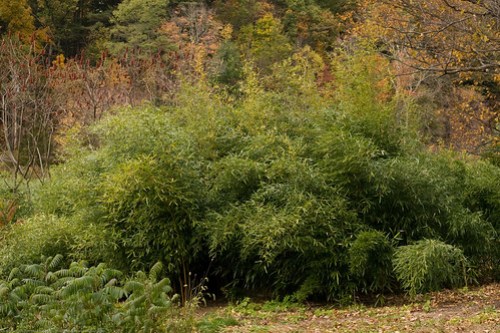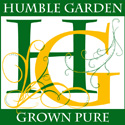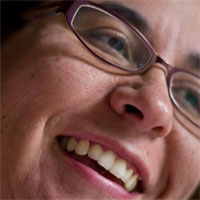
Recently I had the great fortune of attending Eric Toensmeier‘s Edible Forest Gardening workshop in Holyoke, MA Oct 16 to Oct 18. Before I go any further let me just say that if you have a chance, please go to this workshop the next time they hold it. You will be very glad you did! I am not sure when the next one might be. I will certainly blog about it here when I find out. There are other workshops that look VERY interesting at Eric’s “Event” page.

As you may recall, Eric, along with Dave Jacke, wrote “Edible Forest Gardens (Vol.s 1 and 2)” and he also wrote “Perennial Vegetables“, a resource for those of you interested in learning about new perennial edibles suitable for your region.
There were three other people who made this event possible.

Jonathan Bates, of Food Forest Farm, who was a fantastic co-presenter and amazing resource for so many of the MILLIONS of questions that I had. Check out his site and learn more about what his farm can do for your budding perennial food garden.

Steve Breyer, Tree God Extraordinaire and moss evangelist of the Tripple Brook Farm, very generously hosted the workshop on two of the days. His farm / nursery is an amazing play land of edible plants and northern food bearing trees.
And finally, Marikler Toensmeier (Eric’s lovely wife) who did a ton of work putting together all the delicious and wholesome foods at this event. I dont have any photos of Marikler because it seemed intrusive!
The conference began on the evening of Friday October 16th at Holyoke Community College. We gathered in the conference room you see in the photo at the top of this page and Eric and Jonathan did a lovely job of immersing us into the world of edible forest gardening with an overview of the various aspects of forest and forest-like gardens as well as some permacultural principles.
This got us ready for the next day when we were going to be meeting at Eric and Jonathan’s homes and shared urban perennial garden for a tour and further discussions about edible forest garden design. If you have the book Perennial Vegetables, you will recognize his garden in some of the photos in the book.
Before we ended the night, we snacked on ripe paw paws!

The next morning, Saturday, bright and early and quite chilly, we met at Eric and Jonathan’s home to begin our tour. We started with the very sunny morning sun side of the house and learned about it’s microclimate and the sorts of plants that they are able to grow there. Mind you, back in my garden it had been snowing and the season was DEFINITELY over. It actually snowed at our home while it was nice in Holyoke.
We started the day off by tasting these cute super tiny wild cucumber like fruitlets. I can not remember the name of this plant, sorry!

They also grow non-edible bananas here.



We walked into the back and learned about how they went from a hardpack urban waste lot to a wonderful abundant perennial garden via a specific design process.

I want to take an aside and say just how glad I am to have gotten a chance to meet Phil and Tom, up from Brooklyn. They have been diligent campaigners for our world and transition. They have put together peak oil, permaculture, urban gardening, and many other sorts of events in the NYC area over the years. I look forward to getting to know them better in the future!
We then split up into groups and Eric and Jonathan took us through the garden, plant by plant, and explained pretty much everything about them from their polyculture setting, to their function in the larger design, to the types of fruits they bore (and we got many taste tests) as well as how they didnt fit in or might need to be or had been modified or moved to be a better part of the whole design.
Here are a few photos from the tour.











After lunch we took off for the Tripple Brook Farm to begin a look at a large scale of edible forest gardening.
As I mentioned before, Steve Breyer owns this amazing place. There is so much one can say but I am going to simply share images from the tour we took.






Steve feels very strongly that mosses should be the preferred ground cover (versus grasses).




These photos totally do not give you a sense for how raw and cold it was that day. At this point in the tour we sheltered in Steve’s work shed (with warm wood stove) where we got to taste pine nuts, chestnuts and hardy kiwis and american persimmons and dogwood tree fruits (Cornus kousa).








Steve had the chestnuts roasting on the woodstove all morning. We have nut allergies so I didnt taste them but I fell in love with the way they looked! I shot a series of photos of these crazy spiky chestnuts.









That evening we went back to Holyoke community college and delved deeper into polyculture design and learned quite a lot about grouping polycultural plantings that enhance and nurture each other and which build a more robust environment.
Some of what we learned that evening we used the next day in a practical way.
I went home just wiped out from that day. I was really worried that I would have no energy to get up and make the hour drive out early on Sunday, the third and last day. An odd thing happened though. I awoke really refreshed and ENJOYED driving at the crack of dawn out into the cold weather. I think there is something in these fruits that did me some good. Its also the fresh air and also, hugely more important, that I was doing something I found VERY exciting and engaging and with people who I really respected and admired.
This is quite a change from most of the jobs I have had in recent years – soul robbing activities. I can definitely see myself doing this for a living (I cant say how but it would be deeply satisfying).
The third day was intense. We assembled ourselves in Steve’s work shed and set to work on designing a new planting design for part of his nursery.
We did site assessment, analysis, and then in-depth design, as groups. It was an exercise in design as well as interpersonal communications.
While we didnt implement this particular design (there is only so much you can do in a few hours!) we pitched in and helped clean up the site and also put in some new plantings.
I have learned so much from this workshop. I would recommend it highly to anyone and I hope that some of you are able to attend future events like this. If you cant come out to tundra-like Massachusetts, you likely can find some near you!
Let me know if you do and how it goes!

















[…] from: Edible Forest Gardening Workshop | Humble Garden AKPC_IDS += "2573,";Popularity: unranked […]
Cottonwood tree fruits?! Please, tell me more! I wrote an entire book about cottonwoods and thought I had studied every aspect from the ground up…literally! What species/subspecies of cottonwood grows these fruits? Are we talking Populus deltoides, etc.? Great pictures all around, BTW!
Kathleen Cain
Arvada, CO
author, The Cottonwood Tree: An American Champion (Johnson Books/Big Earth Publishing. Boulder: 2007).
Kathleen,
I am certainly no expert on cottonwoods! I have googled a bit and find this image looks close but not right on.
http://www.ncrs.fs.fed.us/4153/deltawest/forestchar/ElmAshCotton001.asp
I will check in with Eric and see what more he can tell me
[…] This post was mentioned on Twitter by Nika B and Workshop Talk, Gardenatrix . Gardenatrix said: RT @nika7k: Edible Forest Gardening Workshop – Eric Toensmeier – http://bit.ly/3WN17R #permaculture #green #garden RT Pls! […]
I am so jealous. Their book, Edible Forest Gardens, is one of my all-time favorites: I love the theory, the design, the practical advice, the nitty-gritty and the world-wide aspects of it… I am definitely going to check out their workshops. My (first) garden this year was almost exclusively annual vegetables, but we have a lot of room still for perennial forest crops.
Thanks for this mini-workshop!
Katrien
PS, a friend gave us some cotton wood berries and they are so good!
Katrien,
Yes, I too mostly grow the annuals but am starting LOADS of paw paws which will be the planted out all over our land.
I just had a brain storm about this really low spot on our land that would be PERFECT for mushroom growing (morels and king stropharia and other loose litter species)
So many possibilities!
[…] I recently put the proofing and convection baking to a greater test as I baked up SIX loaves of bread at the same time. I made 12 loaves that day for an event I was helping out with (Edible Forest Gardening Workshop). […]
Nika,
Wow! Great blog! Thanks again for all your help at the workshop. As for the picture you emailed me, labeled cottonwood fruit. It is actually a Kousa Dogwood fruit, Cornus kousa. Also, if you could change my nursery link to permaculturenursery.com Be well! Thanks!
Jonathan: hey thnx for stopping by! Also, many thnx re: species name on the dogwood fruit.
I have changed the link as well!
Kathleen,
Ok, I have the answer – not cottonwood at all! dogwood tree fruits (Cornus kousa)
Hi, Nika & Jonathan ~ THANKS for answering on the cottonwood/dogwood fruit question. Whew! Thought I had really missed something there–you know how wonderfully surprising the arboreal world is on a daily basis, even when you think you know it well!
On a different note, may I recomend a FABULOUS book called Wildwood/A Journey Through Trees by the late British naturalist Roger Deakin. (Free Press. 2007). It’s a memoir of people, places, and trees, beginning with elementary school, roaming through a wooded preserve, flinging down square-foot frames to count all the species within. He ambles through England, seeking out trees, people (as well as the Green Man), and their shared wisdom. The journey extends internationally: the Pyrenees, the Bieszczady Woods (trying saying that fast ONCE!)…the prose is plummy, and all the Latin names are correct. Ah, the mind of science given through the heart of a poet…a page-turner for wood-loving folk! Kathleen Cain
Kathleen,
Sorry to give the scare! I am glad it brought you to the blog tho The book sounds amazing and I will see if I can get ahold of it! Thanks for the heads up.
The book sounds amazing and I will see if I can get ahold of it! Thanks for the heads up.